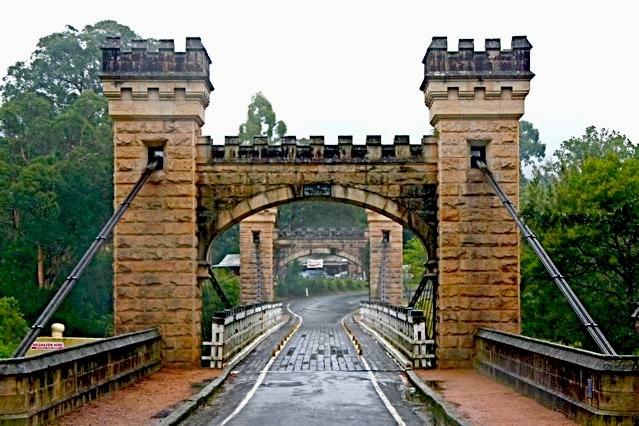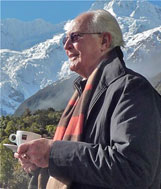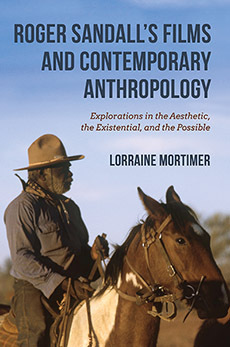Pugin, Ruskin, and the Gothic Revival
Hullo, what’s going on here? Is this an old movie set, or something carelessly lost in translation, or an Australian architectural joke?
 Driving down from a rainy plateau where I’d been enjoying the country air, steering around fallen rocks until the winding road from the escarpment straightened out on the valley floor, this is what loomed in the mist: a bridge with battlemented towers of stone massive enough to frame a royal portcullis, two at one end, two at the other. (And believe it or not the place is called Kangaroo Valley.)
Driving down from a rainy plateau where I’d been enjoying the country air, steering around fallen rocks until the winding road from the escarpment straightened out on the valley floor, this is what loomed in the mist: a bridge with battlemented towers of stone massive enough to frame a royal portcullis, two at one end, two at the other. (And believe it or not the place is called Kangaroo Valley.)
Had archers crouched behind those castellations or knights in armor clashed beside the creek? Most unlikely. When the Hampden Bridge was built in 1895 the district contained a bunch of dairy farmers, a butter factory, and a pub. Bridge design gives engineers plenty to think about—they have to reconcile money and time, materials and stability and strength. In Kangaroo Valley they must have decided that the local stone looked good, and since masons were available and towers were needed anyway for the suspension cables, why not add a bit of castellation too?
 Yet historians tell us that within only a decade, in 1905 at Tavanasa on the Rhine, the Swiss engineer Robert Maillart built a reinforced concrete bridge very like the one at Salginatobel shown on the right. (For Maillart’s full and remarkable story see David P. Billington, Robert Maillart: Builder, Designer, Artist, Cambridge University Press 1997.)
Yet historians tell us that within only a decade, in 1905 at Tavanasa on the Rhine, the Swiss engineer Robert Maillart built a reinforced concrete bridge very like the one at Salginatobel shown on the right. (For Maillart’s full and remarkable story see David P. Billington, Robert Maillart: Builder, Designer, Artist, Cambridge University Press 1997.)
Severe, elegant, and entirely original, Maillart’s designs changed bridge construction forever—or they did eventually, since he got little help from the conservative Swiss authorities that awarded civil engineering contracts in his day. Nevertheless during his lifetime (1872—1940) his bridges left an indelible aesthetic impression, and though he cared little for the arts, and never thought of himself as an artist, his work received an admiring chapter in Sigfried Giedion’s Space, Time, and Architecture.
But the question is this: which design do we prefer and why? Which seems more natural? Which seems odd? I suppose one shouldn’t make too much of the principle that form should follow function, even if it’s true of surfboards; and we willingly concede that medieval revivalism might make sense in Europe in the form of cathedrals.
But what about turrets and battlements in the land of Terra Australis, where there’s nothing to “revive”, where all historical association is lacking, where the last several thousand years of human occupation have seen little but bough shelters and grass huts… In the land of the gumtree what in God’s name is the point?
Pugin, Ruskin, and pointed architecture
Augustus Northmore Welby Pugin would have argued that God’s name provided all the point that was needed. Europe’s cathedrals are the greatest architectural achievement of mankind—nothing else comes close—and the whole meaning of what was sometimes called “pointed architecture” was to glorify God with spires and pinnacles rising to the heavens—their ascent was aspirational.
He would have angrily rejected any parallel between sham battlements (whether English follies or Australian oddities) and his own religious work. Pugin would also have argued that in his own writings he regularly ridiculed merely decorative or fashionable Gothic: it was serious church architecture in the “pointed” style that really mattered.
* * *
From Rosemary Hill’s superb new book about Pugin, God’s Architect (Allen Lane 2007), it’s obvious that in the early 19th century the aesthetic rage of both Pugin and John Ruskin was turned against two things—the ugly factory world with its heedless aggrandisement and no-brow taste, and the mad electicism of upper classes with more money than sense, whose building projects enthusiastically mimicked everything from Hindu to Egyptian to Chinese. (See Ruskin’s parody prospectus below.)
Both Ruskin and Pugin looked backward; both were vehement in debate and wrote passionately on behalf of their ideals; both banged on relentlessly about truth and honesty in art; both had episodes of madness and both had difficulties with women—Ruskin alternating between aversion and nympholeptic delirium, Pugin being perhaps too uxorious for his own good (though dying young he outlived two wives, married a third, and fathered any number of children).
But beyond their shared commitment to a vision of Christian religious art they had little in common, numerous differences separating the rhapsodising cultural patrician and the rough-tongued part-time sailor. (Pugin once said “there is nothing worth living for but Christian architecture and a boat.”) Ruskin deprecated Doric because it allowed little scope for ornament; Pugin detested it because it was ‘pagan’. Ruskin was drawn to Amiens Cathedral because its exterior was alive with sculptures; Pugin loved cathedral interiors because the spellbinding godly atmosphere provided the right setting for Christian worship.
Pugin’s work
Architects need patrons, and Pugin was lucky to have the support of the 16th Earl of Shrewsbury, a wealthy Catholic who had inherited property valued at £347,511. His predecessor, the 15th Earl, had filled his gardens with a deplorable confusion of Indian temples, Chinese pagodas, and a model of Stonehenge. The enlightened 16th Earl wanted none of that, and commissioned Pugin to improve and Gothicise a number of buildings he owned. At one point Shrewsbury wanted to extend a ruined castle he owned to include a hospital for elderly priests. Sham castellation would be needed to make the hospital blend in. Pugin was outraged:
I would sooner jump off the rocks than build a castellated residence for priests!
More significantly, Shrewsbury also funded what Rosemary Hill describes as “one of the most admired and visited of all Victorian buildings.” This was the church of St Giles in the little Staffordshire town of Cheadle. On a small scale it embodied the ideals displayed in his 1836 book Contrasts, which compared as invidiously as possible the bare unornamented nonconformist churches of the day (Evangelical chapels and Quaker meeting halls) with the visionary splendors of medieval cathedral naves that filled his imagination:
…what a burst of glory meets the eye, on entering a long majestic line of pillars rising into lofty and fretted vaulting!
The eye is lost in the intricacies of the aisles and lateral chapels; each window beams with sacred instructions, and sparkles with glowing and sacred tints…
* * *
The plates in God’s Architect show why Pugin’s church at Cheadle was so admired. No detail of ornament or fixture had been overlooked. Cardinal Newman described St Giles as “the most splendid building I ever saw… enough to convert a person. The chapel is on entering a blaze of light. I could not help saying to myself ‘Porta Coeli’.”
Among the visitors who came for the church’s consecration in 1846 was Sir Charles Barry, the architect appointed to design the new Houses of Parliament. Pugin made a huge but little-known ornamental contribution to this most famous example of Barry’s Gothic work. It was however little known because Pugin had converted to Catholicism, and in Sir Kenneth Clark’s words, “all parties were half-ashamed of this uncouth renegade.”
The issue was later muddied by a dispute between the two families, but the truth is roughly as follows: Without Pugin’s mastery of medieval detail the British Houses of Parliament and Big Ben itself would not look the way they do; without Barry’s direction and control they wouldn’t exist at all. In The Gothic Revival Sir Kenneth Clark wrote that
The silly question, ‘Who was the architect of the Houses of Parliament?’ is well forgotten; but it is worth remembering that every inch of the great building’s surface, inside and out, was designed by one man: every panel, every wall-paper, every chair sprang from Pugin’s brain, and his last days were spent in designing ink-pots and umbrella-stands.
The educational deficit
In his sketch of Pugin’s biography Clark wastes little time on childhood: “At this period of their lives, it seems, men of talent are all much alike—the same solitary school-time, the same violence of temper, the same omens of a brilliant future”. We know what he means. But Rosemary Hill properly gives Pugin’s early years more space. Only by understanding the deep impression left on him during his visits to Lincoln Cathedral and York Minster, planting “ideas and impressions that would last all his life”, can we understand both the passion of his vocation and its limitations.
At an age when men like Ruskin were at university, Pugin was still employed working for his father helping illustrate books about England’s cathedrals. Largely self-educated, he was never apprenticed to an architect, never studied architecture formally, never even understood that the Reformation he reviled for its destruction of so much religious art came after, not before, the Renaissance. His enthusiasm for medieval buildings was combined with a lofty contempt for neo-classical styles—including Michelangelo’s work at St. Peter’s. When in his teens he left his father’s studio, his first encounter with the outside world was at Covent Garden.
Stage-struck between the ages of 16 and 20, Pugin became a valued scene-painter and designer, Clark telling us that his greatest triumph came when “his correct and gorgeous scenery made a success of the opera Kenilworth”—an adaptation of Sir Walter Scott’s novel that made much of Kenilworth Castle. At Covent Garden Pugin befriended the workmen at the theatre, many of them sailors who “knew the ropes” both on deck and in the flies, bought himself a boat, and began the lifelong habit of wearing self-designed clothing on the lines of a seaman’s rig.
He had little money; at Covent Garden he sometimes slept in the boxes; and the friendly habits of the theatrical crowd meant that his nights were not always alone. Rosemary Hill intimates that it was probably at this stage of his life he contracted the syphilis from which, at the age of 40, he later died.
Pugin visits Rome
His dress was idiosyncratic. He was often dishevelled. He frequently swore like a sailor. But all this was combined with great good humor, and in the room where he worked—with nothing more than a rule and a rough pencil—there was “a continual rattle of marvellous stories and shouts of laughter.” He had tales to tell of the sea, of trips to Flanders to buy religious antiquities, and of being wrecked on the Scottish coast. In Kenneth Clark’s words, no-one could escape “his medieval vehemence and whole-heartedness.” He loved the exotic language of the ecclesiastical world:
The stoups are filled to the brim; the rood is raised on high; the lamps of the sanctuary burn bright; the albs hang in the oaken ambries and the cope chests are filled with orphreyed baudekins; and pix, and pax, and chrismatory are there, and thurible and cross.
Not originally Catholic, Pugin became convinced that it was only within the Roman Catholic Church that “the grand & sublime style of church architecture can ever be restored”. He converted in his early 20s, and about the same time moved to Salisbury where he built himself a second house. Friends found his enthusiasm and warmth irresistible. Cardinal Newman, however, though an admirer of the church of St Giles at Cheadle, was finally unable to bear its architect. He described Pugin as an “immense talker” who was “rough tongue-free unselfgoverned.” And unselfgoverned tongue-free talkers were something Newman couldn’t abide.
In 1847, recovering slowly from a bout of mental illness (he would die within five years), Pugin took himself off to Europe wearing his sailing clothes, carrying one spare shirt, and looking far from clean. In Rome he felt compelled to speak his mind. The city was “disgusting and depressing”, he loathed the “paganism” of both the Renaissance and the Baroque, and he told two prelates who were “in immediate attendance on the Pope” that he “expected St Peter’s to be rebuilt in the Gothic style.”
Should we take much notice of this? I don’t think so. In his final years he was under considerable strain, with declining health, and his mind was failing fast. More important is the fact that during his amazingly productive short life, this distinguished artist, in Rosemary Hill’s words, “inspired, transformed, and reinvigorated English architecture and design”, profoundly changing British thinking about religious architecture and the face of Britain itself.
The Hampden Bridge revisited
But what about that Australian bridge? Is there nothing more to be said about Kangaroo Valley’s unusual ornament? The first thing to remember is that the bridge is still standing and carrying a heavy load of main road traffic. It was plainly well-built. And the second thing is that perhaps we shouldn’t take it all too seriously. If you were brought up to revere Mies van der Rohe’s Farnsworth House, and bridges that look like Robert Maillart’s, it may look odd—and it certainly looks odd to me.
But there’s more to life than art, and there’s more to art than the canons of modernism. Aesthetic taste in 2008 is a commercial gallimaufry reinvented each day for a largely juvenile market. And children in a parental SUV coming down that mountain road and glimpsing the Hampden Bridge on a misty day would probably find it exciting—the gateway to a theme park maybe. Standing on a river boundary, it might seem to lure them into the enchantments of endless mock-medieval movies: avoid the troll in the brook, step quickly past the towers… And beyond lies Camelot.
Perhaps, too, those funny castellatory bits and pieces are more life enhancing than one might at first think. The birds of the air may appreciate them, including cockatoos. When Duncan comes to the rough battlements of Macbeth’s castle he comments favourably on the aspect, and Banquo adds a little natural history:
The temple-haunting martlet does approve,
By his loved mansionry, that the heaven’s breath
Smells wooingly here; no jutty, frieze,
Buttress, nor coign of vantage, but this bird
Hath made his pendent bed and procreant cradle…
Not too many accommodating jutties or coigns of vantage on Maillart’s bridges. Or on the Sydney Opera House for that matter. Though a really desperate martlet might just find room for a nest.
Reading
David P. Billington, Robert Maillart: builder, designer, artist, 1997
Michael W. Brooks, John Ruskin and Victorian Architecture, 1991
Kenneth Clark. The Gothic revival: an essay in the history of taste, 1996 (1928)
Mark Girouard, The Return to Camelot, 1985
Rosemary Hill, God’s Architect: Pugin and the building of romantic Britain, 2007
Bernhard Schütz, Great Cathedrals, 2002
Addenda
Eclecticism
It was the complaint of both Pugin and Ruskin that architects in the early 19th century would concoct anything for a price—Scotch Baronial, Old English, Italian Gothic. Ruskin parodied their eager acceptance of whatever their rich clients might suggest, writing that the architect
is requested, perhaps, by a man of great wealth, nay, of established taste in some points, to make a design for a villa in a lovely situation. The future proprietor carries him upstairs to his study, to give him what he calls his “ideas and materials,” and in all probability begins somewhat thus:
“This sir is a note I made on the spot. The approach to Villa Reale, near Pozzuoli. Dancing nymphs, you perceive, sir; elegant, graceful. Then, sir, this is a sketch made by an American friend of mine: Whee-shaw-Kantamaraw’s wigwam, King of the Cannibal Islands I think he said sir. You may observe a log, scalps, and boa constrictor skins: curious. Something like this would look neat, I think, for the front door, don’t you?
The lower windows I’ve not quite decided upon. But what would you say to Egyptian, with hieroglyphics, storks, and coffins, with appropriate mouldings above. I brought some from Fountains Abbey the other day…
Ruskin’s debt to Pugin
Rosemary Hill seems rather too accommodating in her response to Ruskin’s contemptuous dismissal of Pugin. She accepts Ruskin’s claim that he had neither read Pugin’s writings nor allowed them to influence him in any way (“Ruskin in fact owed nothing to Pugin, though they had much in common…” she writes on page 458.)
Regarding the claim that Ruskin “owed nothing” to Pugin, and had never even read what Pugin wrote, Michael W. Brooks in John Ruskin and Victorian Architecture says that this is simply not true: “It is known that he had read and made notes on Pugin’s The True Principles of Architecture. The notes survive.” Brooks goes on:
But perhaps the real point to be made is that Ruskin would have been indebted to Pugin even if he had read nothing at all by him. He would surely have seen reviews of Pugin’s books—including the very long one in the March 1837 issue of the Architectural Magazine.
He would have discussed Pugin’s ideas with fellow members of the Oxford Architectural Society. Above all, he would have been aware of the influence of Pugin on Scott’s design… (for a church in Camberwell).
Scott revised his plans in accordance with Pugin’s call for reality in construction, and it was precisely this demand that Ruskin later expressed so powerfully in ‘The Lamp of Truth’. There are significant differences between Ruskin’s view of Gothic and Pugin’s, but Ruskin’s denial of any debt can only be explained by the sectarian fervor that gripped much of England at mid-century. (Brooks, page 49)
The Oxford Museum
Among the weirder creations of the period is the Oxford Museum of Natural History. In the 1850s the question of an appropriate style for its design was fiercely debated: Should the façade be Gothic or Classical? Largely as a result of Ruskin’s campaigning Gothic was approved for the whole structure, inside and out, some of the decorative details being provided by Ruskin himself. Among other things it contained a chemistry lab in the shape of an abbot’s kitchen. In his 1949 biography of Ruskin Peter Quennell provides an entertaining account of the sad disappointment Ruskin felt at its final appearance:
Over the main entry of this shrine of learning, an angel displayed in his right hand the open Book of Nature, while in his left he supported a cluster of ‘three living cells,’ symbolic (it was understood) of Life’s mysterious origins. Within an imposing quadrangular hall, columns of cast iron soared up towards the glass roof, bursting, as they completed their ascent, into a wealth of wrought-iron foliage.
Organic Form again predominated; arching over the student’s head were spandrels twisted into the shape of interwoven forest-boughs; the angularity of brackets and girders was softened by the profusion of leaves and blossoms and fruit that had somehow curled among them. Here were the elm, the holly, the briar, the passion-flower and the water-lily.
In the main court, with its double arcade, polished shafts of stone had capitals and bases enwreathed with the forms of numerous plants and animals, disposed in a manner at once aesthetically pleasing and scientifically enlightening.
* * *
It was a notable task nobly performed. And yet—across the happiness that Ruskin felt, or that he should have felt, there crept a lengthening shadow. The intention had been good, the execution honest. He had been stimulated by the task on hand: now that it was finished and he could at last stand back, so sensitive a lover of the best in art must needs admit that the Oxford Museum, as it had risen, was not entirely beautiful.
He did not see it, let us piously suppose, even for a second of horrible illumination, in all its true ugliness. But he was obliged to confess—after Wordsworth’s early death of consumption in 1861—that the building had, from some points of view, “failed signally of being what he hoped.”
Somehow the plan had miscarried; a malicious spirit was abroad—the spirit of an age he hated and despised and feared—which came always between himself and the satisfaction that he coveted.
At its touch the flowers and fruit he had designed, losing their virginal freshness, shrivelled into curlicues of tormented cast-iron: a chemical laboratory in the shape of an abbot’s kitchen seemed unsuitable and awkward: his visionary fabric shed its lustrous antique patina and was revealed, beneath one of those lowering skies that often weigh on Oxford, as a mere pretentious accumulation of livid modern masonry.

 An Australian writer living in Sydney, Roger Sandall is the author of The Culture Cult (2001), a study of romantic primitivism and its effects. His work has appeared in a number of places including Commentary, The American Interest, Encounter, The New Criterion, The American, Sight and Sound, Quadrant, Art International, The New Lugano Review, The Salisbury Review, Merkur, Mankind, Visual Anthropology, and Social Science and Modern Society.
An Australian writer living in Sydney, Roger Sandall is the author of The Culture Cult (2001), a study of romantic primitivism and its effects. His work has appeared in a number of places including Commentary, The American Interest, Encounter, The New Criterion, The American, Sight and Sound, Quadrant, Art International, The New Lugano Review, The Salisbury Review, Merkur, Mankind, Visual Anthropology, and Social Science and Modern Society.